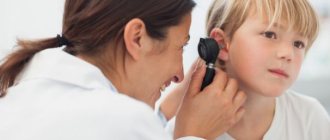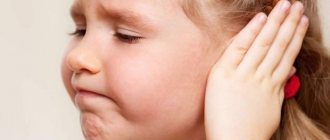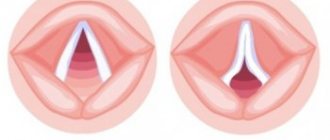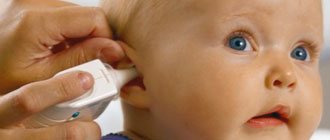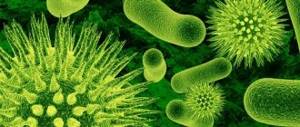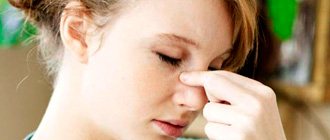What is otitis media? This is an acute or chronic ear disease. The pathology occurs with severe pain that is aching, pulsating or shooting in nature. It can radiate to the temporal or occipital part, teeth. The danger of the disease lies in the possibility of the patient developing irreversible deafness. How to treat otitis, the types and symptoms of the disease will be discussed in the article.
Diagram of the auricle
Types of otitis media and ICD-10 code
Depending on the direction of the pain, it is customary to distinguish 3 types of otitis: external, middle and internal otitis.
- Otitis externa most often appears as a result of mechanical damage to the auricle or external auditory canal. The following symptoms are characteristic of external otitis of the ear: aching, dull pain, swelling of the ear, and a slight increase in temperature.
- Otitis of the middle ear is an inflammatory disease of the air cavities of the middle ear: the tympanic cavity, the auditory tube and the mastoid process.
- Internal otitis is untreated otitis media of the middle ear. With internal otitis, inflammation of the inner ear occurs and the entire vestibular apparatus is damaged.
Acute otitis media
According to statistics, acute forms of otitis media account for 30% of the total number of ENT diseases. Most often it occurs in preschool children.
Otitis code according to ICD-10:
- H65 - Nonsuppurative otitis media
- H66 - Purulent and unspecified otitis media
- H67 - Otitis media in diseases classified elsewhere
Symptoms
The main symptoms of catarrhal otitis in newborns and young children:
- Moderate shooting pain in the ear;
- Temperature from 38º C or more;
- Anxiety;
- Decreased activity;
- Decreased appetite;
- Vomiting and diarrhea;
- Redness of the eardrum;
- Accumulation of fluid in the tympanic cavity.
In older children, adolescents and adults, sudden onset manifestations predominate, such as:
Symptoms of otitis media
The severity of symptoms is influenced by the virulence (aggressiveness) of bacteria and the state of the immune system.
Signs of otitis media can be different and depend on the form of the disease. Most often, pain in the ear occurs in a shooting nature, which has a sudden onset and end. Pain in the ear area does not always indicate the development of otitis media. It may indicate wax plugs, eardrum injuries, or a foreign body entering the auricle.
You should also know that sometimes the disease is not accompanied by acute pain in the ear area.
Acute external otitis
Acute external otitis media with a purulent follicle in the ear canal is usually accompanied by pain. They intensify when the ear is pulled back, pressed on it, the mouth is opened, or the ear specula is inserted during a medical examination. The auricle becomes reddish and swells. A purulent infection may occur, which is accompanied by hyperemia and swelling of the skin of the ear canal, and the release of pus with an unpleasant odor. Pain also occurs, followed by itching and stuffiness in the ear.
Otitis media
Inflammation of the middle ear has several stages of development.
- The first degree is characterized by the development of drilling, pulsating or shooting pain radiating to the eye, jaw, and temple. The main symptom of acute otitis media is an increase in body temperature above 38°. The pain intensifies at night and negatively affects the quality of sleep. This is explained by the pressure on the eardrum when in a horizontal position. The patient also complains of hearing loss, ringing and noise in the ear.
- The second stage develops after a rupture of the eardrum and is accompanied by the leakage of purulent contents, a decrease in pain, and normalization of temperature indicators.
- The third stage of the disease begins after the flow of pus stops. The inflammatory process subsides, and scarring of the eardrum occurs. Possible hearing loss.
Internal otitis is characterized by the appearance of dizziness, nausea, turning into vomiting. The patient complains of significant hearing loss, noise in the ear area, and loss of coordination. This type of disease is a complication of otitis media.
Symptoms of otitis media in a child
Symptoms of otitis media are much more common in children, but will present in the same way as in adults. An increased percentage of this disease is associated with incomplete development of the structure of parts of the hearing organ and individual tissues. The likelihood of getting sick is higher in children who have reduced immunity after recent colds, viral infections, and flu. Otitis becomes a complication of these pathologies.
Folk remedies
It is impossible to cure acute catarrhal otitis media with folk remedies, but it is possible to support and promote drug treatment with “grandmother’s recipes”.
Warming compresses
- Mix 50 ml of water and 50 ml of alcohol, heat the solution. Soak gauze in this solution, wring it out and place it on top of the ear, but so that the auricle is open. Lubricate it with baby cream or Vaseline. Leave the compress on for 2 hours.
- You can apply baked onion or plantain to your ear. This procedure will help the boil break out as quickly as possible.
- Decoction of bay leaf. This method is very effective. You will need 1 glass of water and 5 bay leaves. Mix, bring to a boil and let it brew. Drink 3 tablespoons 2 times a day, and drop 10 drops into the ear.
- Steam bath. After the boil breaks through, you can make a steam bath. To do this, you need to boil a kettle, cover the spout of the kettle with something warm and direct the escaping steam into your ear at a distance of at least 50 cm. Warm your ear for about 3 minutes, and then wipe your face with a cold towel. This procedure will need to be performed 10 times. A steam bath helps relieve discomfort in the nose, ear and throat.
- Salt. Heat 1 cup of salt in the microwave, then place in a thick cloth bag, wait until it is hot but not scalding, and apply to the area next to the ear. Do not place the bag directly on the ear. Hold for 5-10 minutes. This procedure can be repeated many times until complete recovery. If you don't have salt, you can use rice.
- Garlic. This product can kill germs and relieve pain. Take 2-3 cloves of garlic and boil them in water for 5 minutes. Remove, chop and salt. Next, put this mixture in gauze and apply it to the area next to the ear. Also take garlic internally daily.
- Apple vinegar. Take apple cider vinegar, alcohol or water and mix in equal proportions. Wet the swab and insert it into your ear for 5 minutes. Then drain all the mixture from your ear. You can also use white vinegar.
Nasal sprays for runny nose
Treatment of chronic pharyngitis in adults with drugs is described in this article.
How many days is sore throat contagious //fotonamolotok.ru/zabolevaniya/gortani-glotki-bronxov/angina/kak-i-kogda-mozhno-zarazitsya.html
Causes of ear disease
The two main causes of otitis are infection and spread of inflammation from the nasopharynx to the middle ear, as well as ear trauma.
In acute respiratory viral diseases, an infection that affects the nasal mucosa penetrates the middle ear through the eustachian (auditory) tube. Predisposing factors for the development of otitis media are swelling of the nasal mucosa, which disrupts the drainage of the middle ear cavity, as well as strong blowing of the nose at the same time with both nostrils. Chronic diseases of the ENT organs (sinusitis, tonsillitis, etc.) can also cause otitis media, since the ears, nose and throat are interconnected. Infection from other organs transmitted through the bloodstream can also cause otitis media.
Injuries to the middle ear that cause otitis media can be with or without penetration. Penetrating injuries occur when the integrity of the eardrum is damaged by a foreign object. Non-penetrating injuries occur when there is a sharp change in atmospheric pressure, for example, on an airplane (aerootitis) or during underwater diving (mareotitis).
Why acute otitis media occurs more often in children
There are age-related features of the structure of the middle ear that contribute to a more rapid spread of infection from the nasopharynx to the middle ear. The auditory tube in children is short, wide and located almost horizontally (devoid of physiological bends characteristic of adults).
In addition to anatomical and physiological characteristics, children are characterized by some pathological conditions that contribute to the development of AOM. First of all, these are adenoid vegetations (hypertrophic changes in the lymphoid tissue of the nasopharynx) - streptococci and Haemophilus influenzae are often found in them.
Children attending children's groups are constantly in contact with each other's infectious agents. For one child, a particular pathogen may be opportunistic and not cause disease, but for another it may be virulent, aggressive and cause inflammation of the upper respiratory tract, from where the process may spread to the middle ear.
Children often suffer from respiratory viral infections, which can be complicated by AOM. In addition, these infections not only weaken the immune system, but also lead to morphological changes in the mucous membrane of the respiratory tract, reducing its immunity (resistance) to potentially dangerous (pathogenic) microflora.
There are so-called transient (physiological) immunodeficiency states that are characteristic of young children - they are also a favorable background for the occurrence of infectious diseases.
Diagnostics
To diagnose otitis, as a rule, an examination by a specialist is sufficient. An otolaryngologist, using an otoscope, can obtain information about the condition of the outer and middle ear, as well as see changes in the eardrum. If necessary, the tympanometry method is used, which determines the presence of infiltration in the middle ear or obstructions in the eustachian tube.
Sometimes the doctor decides that it is necessary to identify the bacteria that became the source of the infection. To do this, the infiltrate is taken from the middle ear using a needle. The results of the analysis will help make antibacterial therapy targeted and effective.
To confirm otitis of the inner ear, the doctor resorts to electronystomography.
Classification
Chronic purulent otitis media has 2 clinical forms: mesotympanitis and epitympanitis. Mesotympanitis (tubotympanic otitis) accounts for about 55% and is characterized by the development of an inflammatory process within the mucous membrane of the tympanic cavity without involving its bone formations. Epitympanitis (epitympanic-antral otitis) accounts for the remaining 45% of cases of chronic purulent otitis media. It is accompanied by destructive processes in bone tissue and in many cases leads to the formation of cholesteatoma of the ear.
Complications
If otitis media is not treated at all or the wrong therapy is prescribed, the disease can lead to the manifestation of a purulent form of otitis in just a few days. In turn, the consequence of purulent otitis is often a rupture of the eardrum, a pathological process that affects the auditory nerve. As a result, there is a noticeable decrease in hearing.
Read also: Sore throat in adults: symptoms and treatment of pathology
Among the most serious complications of otitis media is mastoiditis. With this disease, an inflammatory process occurs in the mucous membrane of the mastoid cells. If such a complication develops, the patient must undergo urgent surgical intervention. If the pus that accumulates during the progression of otitis media penetrates into the cranial cavity, then this condition is life-threatening.
In cases of purulent meningoencephalitis, a high mortality rate is observed. Therefore, to prevent the complications described above, it is necessary to carefully treat otitis media, guided by the prescriptions of a specialist. If the approach to therapy is incorrect, then such a situation is fraught with the transition of otitis to a chronic form. Chronic otitis media is much more difficult to treat, and the patient may eventually lose hearing. If a patient wants to completely cure chronic otitis, he most often needs to undergo a complex surgical operation.
In addition, complications of otitis media can include labyrinthitis, brain abscess, and sepsis.
Medical treatments
Very often, catarrhal otitis media goes away on its own. The choice of drug treatment is based on the patient’s age, as well as the presence and frequency of previous infections. First of all, they resort to drugs to relieve pain and eliminate inflammation and fever:
- Ibuprofen and Paracetamol preparations in age-related dosages (orally);
- Locally - instillation of drops heated to 37º containing the anesthetic Lidocaine (for example, Otipax).
Drops should not be instilled if purulent, bloody, clear discharge appears from the ear. The patient should immediately consult a doctor to identify a possible rupture of the eardrum.
- Antibiotic therapy (penicillins, cephalosporins, macrolides) is prescribed if the patient is at least 24 months old. Antibacterial drugs are prescribed to children over 2 years old for high fever (up to 40º), severe pain; in other cases it is not routinely performed. The so-called “wait and see” approach is used.
The effect of taking antibiotics is assessed after 48 hours. In the absence of this and deterioration of health, a doctor’s review of treatment tactics is required. In this case, the doctor may prescribe:
- Eardrum puncture;
- Bacteriological culture with determination of pathogen sensitivity and other types of examination.
It is prohibited to use for the treatment of children:
- Alcohol drops (for example, Levomycetin, Boric alcohol, etc.) due to their toxic effects on hearing and balance analyzers;
- Wax candles due to the risk of burns and blockage of the ear canal;
- Semi-alcohol compresses due to the ease of absorption of alcohol and intoxication.
Sometimes the doctor prescribes physiotherapeutic treatment:
- UHF;
- Ural Federal District;
- Laser therapy;
- Pneumomassage of the eardrum.
To treat catarrhal otitis media, antihistamines and vasoconstrictors are often prescribed. When using them, you should strictly follow the doctor’s prescription and recommendations, since antihistamines can provoke thickening and make it difficult to absorb the fluid accumulated in the tympanic cavity.
Children under 2 years of age with developing speech should be examined by a specialist after suffering from otitis media approximately 2-3 months after recovery to confirm the resorption of the exudate.
During pregnancy, the same tactics are used as for children: pain relief and only if there is a significant deterioration in health, antibiotic therapy with an approved drug (for example, Amoxicillin). In elderly patients, it is important to consider the presence of concomitant pathologies. Thus, the use of non-steroidal anti-inflammatory drugs can lead to exacerbation of peptic ulcer disease.
Treatment of otitis media
Antibacterial drugs (antibiotics, sulfonamides, etc.) play a special role in the treatment of otitis media. Their use has a number of features - the medicine should not only act on the bacteria that cause otitis media, but also penetrate well into the tympanic cavity.
Treatment of inflammatory changes in the auricle begins with bed rest. Antibiotics, anti-inflammatory drugs, antipyretic drugs are prescribed simultaneously. A combination of drugs can effectively treat pathology.
Drops in the ears
It's no secret how acute otitis in adults is treated - with ear drops. This is the most common medicine for otitis media. Depending on the type of disease, different drugs are used. Ear drops can contain only an antibacterial drug or be combined - contain an antibiotic and an anti-inflammatory substance.
The following types of drops are distinguished:
- glucocorticosteroids (Garazon, Sofradex, Deksona, Anauran);
- containing anti-inflammatory non-steroidal drugs (Otinum, Otipax);
- antibacterial (Otofa, Tsipromed, Normax, Fugentin).
The course of treatment for otitis at home takes 5-7 days.
Additional tools:
In combination with ear drops for otitis, otolaryngologists often prescribe vasoconstrictor nasal drops (Naphthyzin, Nazol, Galazolin, Otrivin, etc.), thanks to which it is possible to relieve swelling of the mucous membrane of the Eustachian tube and thereby reduce the load on the eardrum.
In addition to the drops, the complex may also include antihistamines (anti-allergic) agents that have the same goal - relieving swelling of the mucous membrane. These could be tablets of Loratadine, Suprastin, Diazolin, etc.
To reduce temperature and reduce ear pain, non-steroidal anti-inflammatory drugs based on paracetamol (Panadol), ibuprofen (Nurofen), nise are prescribed.
Antibiotics for otitis in adults are added to the treatment of acute moderate form with the development of purulent inflammation. The use of Augmentin has proven itself well. Rulid, Amoxiclav, Cefazolin are also effective.
Physiotherapy
In the stage of subsiding of the disease and during the rehabilitation stage, physiotherapy is an important point in treatment.
It is possible to either visit a clinic using stationary professional devices for physiotherapy, or use some portable devices and techniques at home. The goal is to suppress inflammation and eliminate swelling, activate tissue blood flow and repair processes of affected tissues, normalize or return hearing.
The most commonly used methods are:
- Ultraviolet irradiation (UVR) has a pronounced bactericidal effect due to its effect on the cell wall of microorganisms, moderately dilates blood vessels, accelerating blood flow.
- UHF therapy is the effect on tissue of an electromagnetic field with a certain frequency of magnetic oscillations. It has a warming effect, improves blood and lymph circulation, stimulates the healing of damaged areas, regenerates mucous membranes, and promotes the resorption of inflammatory infiltrates.
- Electrophoresis is the local administration of drugs using direct current. In this case, the medicinal effects are combined with the therapeutic effect of direct current (metabolism activation, anti-inflammatory effect).
- Pneumatic massage is carried out with special devices that affect the ear area; Due to pressure fluctuations within acceptable safe limits, blood flow and recovery processes improve, and fluid outflow from the tympanic cavity is more active.
- Magnetotherapy has a good anti-edema, analgesic and anti-inflammatory effect, stimulates regeneration processes.
- Irradiation with a helium-neon laser helps to dilate blood vessels, accelerate blood flow, and increase local immunity.
In each specific case, when otitis media is detected, only a specialist physiotherapist, together with an ENT doctor, decides how to treat it with physiotherapy.
Treatment of acute otitis media
Since the course of acute otitis media is characterized by a clear stage, the treatment of this disease is also specific at each stage.
In general, treatment for acute otitis media may include:
- osmotically active painkillers and anti-inflammatory drugs of local action (in the form of ear drops);
- systemic and topical decongestants (drugs that constrict blood vessels and reduce nasal congestion);
- systemic antibiotic therapy;
- antihistamines;
- toilet and anemia of the nasal cavity;
- anemization and catheterization of the auditory tube;
- myringotomy and shunting of the tympanic cavity.
In this case, the following are considered ineffective means:
- decongestant therapy in the form of tablets and syrups (taken by mouth) - there is no evidence of their effectiveness, and side effects are common;
- mucolytics (drugs that thin mucus) orally - the reasons are the same;
- local antibacterial drugs (in the form of ear drops) - the antimicrobial component of these drugs does not have the desired effect on microorganisms located in the tympanic cavity; the use of drugs in this group is justified only at the perforated stage of acute purulent otitis, since there is a hole in the membrane through which the active substance enters the tympanic cavity. In this case, the prescribed drug should not have an ototoxic effect (antibiotics such as Polymyxin B, Neomycin, Gentamicin have this effect).
Treatment at home
Home treatment for otitis media can only be used in combination with drug therapy.
Doctors strongly recommend refraining from experiments and not self-medicating, especially if the problem affects a child.
An ENT specialist can recommend: an infusion of propolis, honey, plantain juice, elderberry flowers or other natural ingredients. It is important to know that for otitis media, treatment at home can worsen the patient’s condition.
Many alternative medicine recipes are designed for instillation into the ear cavity. In the event that the inflammation has significantly affected and directly damaged the eardrum, instillation of herbal decoctions and essential extracts can cause a painful symptom and significantly aggravate the course of the disease.
If a patient is diagnosed with otitis media, treatment at home must be carried out under the strict guidance of the attending physician. Otherwise, the patient risks getting a complication of otitis media.
881
Treatment
Almost every person in his life has encountered a disease of the external ear or otitis media. The auricle is accessible to everyone. Many people treat otitis externa at home. Therapy for otitis media and internal otitis should be carried out only according to the recommendations of a doctor. Laboratory and instrumental diagnostics allow you to correctly diagnose and prescribe further adequate therapy.
Treatment of external otitis
To treat minor inflammations in the auricle and external auditory canal, it is sufficient to administer alcohol turundas and rinse with antiseptic solutions. Certain nosological categories should be carried out according to a specific treatment regimen:
| Otitis | Treatment |
| Furuncle of the external auditory canal | Treatment should be etiological and symptomatic. A furuncle is a purulent microbial inflammation of the hair follicle. Antibacterial therapy is carried out. The drug of choice is penicillin antibiotics. Suitable, for example, ampicillin or oxacillin. When the temperature rises, antipyretic drugs are prescribed. A mature boil is opened and washed by a doctor in the hospital. |
| Diffuse external otitis | To relieve swelling, reduce inflammation and itching, antihistamines are prescribed. After a preliminary examination, the otolaryngologist prescribes ear drops or ointments. Daily rinsing with furacillin solution is prescribed. Additionally, you can undergo a course of physical therapy. |
| Otomycosis | Fungal infections of the skin of the outer ear are treated with antifungals. Before applying the ointment, it is necessary to carry out hygiene of the outer ear. In case of severe damage, systemic antifungal drugs are prescribed in the form of tablets. |
| Perichondritis of the auricle | Inflammation of the cartilage of the auricle causes aesthetic discomfort. The disease cannot be treated independently at home. After a preliminary examination, the doctor prescribes antibiotics and local treatments. |
Treatment of otitis media
Treatment for otitis media varies depending on the stage (form).
| Otitis | Treatment |
| Acute eustachitis | At this stage, it is enough to follow the general recommendations regarding the treatment of colds. For a runny nose and nasal congestion, vasoconstrictor drops and rinsing are prescribed. Antipyretic therapy is carried out only at high temperatures. Drinking plenty of warm drinks and ascorbic acid will help quickly cope with intoxication. |
| Catarrhal otitis media | Prescription of antibacterial agents is mandatory. The drugs of choice are representatives of penicillins in oral forms (amioxicillin, amoxiclav, flemoxin solutab) or cephalosporins. Under no circumstances should antibiotics from the aminoglycoside group be used. They are ototoxic and damage the auditory nerve. Warming compresses are prescribed: semi-alcohol or salt heated in a bag. During the first three days, the sore ear is instilled with vasoconstrictor drops and covered with a cotton swab. |
| Exudative otitis media | The doctor prescribes an antibiotic and performs paracentesis. A puncture is made in the eardrum and a shunt is inserted. The manipulation is carried out to facilitate the outflow of pus. |
| Perforated stage of otitis | General recommendations are prescribed, including antibacterial therapy. Local treatment changes. After emptying the tympanic cavity of pus, it is necessary to carry out sanitation. The ear canal is washed with sterile antiseptic solutions, for example, furacillin. Then the ear drops are dried and instilled. |
| Reparative stage of otitis | The goal of treatment is to restore the function of the auditory tube. It is purged and physiotherapeutic procedures are prescribed. To prevent relapse, the patient is recommended to take ascorbic acid and immunomodulators. |
Treatment of internal otitis
Treatment of labyrinthitis should be comprehensive. To prevent inflammation from becoming complicated and turning into purulent otitis with further breakthrough into the cranial cavity, treatment begins with broad-spectrum antibiotics. It is imperative that the patient follows a diet and drinking regime. The drugs are administered intravenously. The body needs to be given plenty of water load with the further administration of diuretics. This will relieve symptoms of intoxication and reduce inflammation. In severe cases of labyrinthitis, hormonal anti-inflammatory drugs are prescribed. For persistent nausea, the use of metoclopramide and antihistamines is acceptable.
If a large amount of pus has accumulated in the cavity of the inner ear, doctors resort to surgical methods. Sanitizing general cavity surgery is performed a week after drug therapy.
Physiotherapy
Physiotherapeutic procedures are widely used for any form of otitis. Procedures can be prescribed throughout the entire period of the disease. Acute otitis media is well exposed to UHF and Sollux lamps. For purulent cases, electrophoresis and microwave therapy are used. Laser tympanostomy is a modern method of treating exudative otitis media.
ethnoscience
Traditional medicine can be an addition to the main treatment. Herbal medicine must be approved by the attending physician and must be combined with basic medications. The safest and most effective recipes are:
- Camomile tea. Has an evidence-based clinical base. Chamomile has a pronounced anti-inflammatory effect. Widely used in the pathology of ENT organs, gynecology, urology, dermatology. The external auditory canal is washed with infusion only if there is no damage to the eardrum.
- For purulent external otitis, a decoction of sweet clover and chamomile flowers is used. External applications of sweet clover are used as an emollient. The distracting effect of the decoction will reduce the intensity of the pain syndrome.
- Thyme. Widely used in traditional medicine for diseases of the ENT organs. The decoction is used to gargle for laryngitis and sore throat. Thyme is included in mixtures intended for inhalation. The soothing and antibacterial effect is used in the treatment of external and otitis media.
- Herbal tea with mint, lemon balm and ginger will reduce feelings of nausea and dizziness.
Consequences
Complications with tubo-otitis occur when treatment was started at the wrong time. And this happens for the reason that the disease has a subacute and chronic course with a blurred clinical picture. Complications include the phenomena of stenosis and the formation of scars on the tissues of the auditory tube. In addition, there is a malfunction of the eardrum. All this contributes to the development of persistent hearing impairment, which can result in irreversible deafness.
The next complication of tubo-otitis is purulent otitis, which requires complex therapy and carries a particular danger as it affects the brain.
Tubo-otitis in the first stages of development is very difficult to recognize, because their symptoms are vague. This is why inflammation so often becomes chronic. It is no longer possible to cure it completely. In this case, it is important to prolong remission and alleviate the patient’s condition as much as possible during exacerbation. So, be more attentive to your health and at the first uncharacteristic changes you should visit a doctor.
